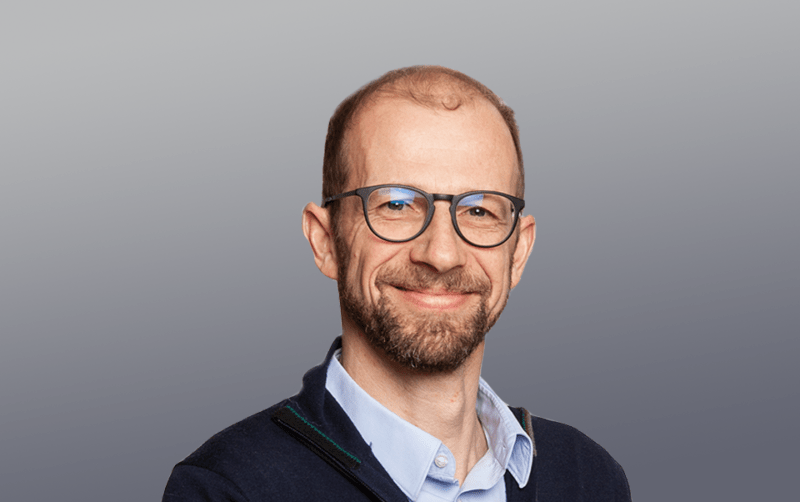
Last December, Qontigo introduced the STOXX® Global Metaverse, a thematic index that follows a unique patents-based methodology to capture the pioneering companies investing in the nascent virtual world.
The selection process uses the comprehensive patents database of EconSight, a technology-based analytics provider. EconSight’s unique patent classification system and indicators help identify and source companies by their intellectual property in seven cutting-edge technologies that have been identified as essential for the functioning and adoption of the Metaverse. These technologies are: 3D image modelling, avatars, graphic processing units, digital twin, blockchain, virtual & augmented reality, and non-fungible tokens.
The selection methodology combines two criteria: a company’s number of high-quality patents (defined by a patent’s business-relevant citation frequency and the number of relevant countries in which it has been applied for) and its patents specialization (the number of a company’s Metaverse-related patents divided by its entire patent portfolio).
We recently caught up with Kai Gramke and Jochen Spuck, Managing Directors at EconSight, and asked them about their company’s work and their involvement with the STOXX Global Metaverse index. Below is our exchange.


Kai, Jochen, what is EconSight?
Kai: “We founded EconSight because we were extremely frustrated over the lack of structural technology analysis. We thought, ‘we need to have a proper understanding of technologies and a definition at a level that people can understand.’ Patents are the foundation for all of this — they are a tool by experts for experts. If you want to get this information into the consulting or business world, or into a C-suite level, then you need to have a different language. And the language that we chose is the technologies. With defined technologies you can analyze all the different concepts that are flying around — digitalization, artificial intelligence, digital twin, etc. — and you can put meaning to them and can quantify the concept. Because we’ve always heard, ‘that company is very good in AI,’ for example, but there were no numbers to support that claim.”
Jochen: “We wanted to translate patent information and this expert knowledge into a conceptual space that everyone could understand, and into measurable innovation scores for technologies. We make technologies understandable, measurable and visible. We translate that complex patent world into concepts that are easily grabbable and understandable.”
What’s different to other providers in the way EconSight collects data?
Jochen: “What we do differently is that we measure everything technology-defined. We want to score each company by what it is doing within a given technology.
Our definitions are at the middle-ground level, between the very granular and the high concept, where people understand the technology and say, ‘this is a thing, and this thing has a market, and these are the players in this market.’”
Kai: “Some providers allocate one innovation score per company. We would say that that doesn’t tell you anything. You want to know who’s good in a certain technology. We are always technology-first. We profile a company to every technology and get an innovation score for each technology and each company. We need to segment the company in their potential markets and measure them out. We can compare Apple’s virtual reality activity against its loudspeakers business. Some patents cover two technologies. In our world, that gets two indicators, two quality measures.”
Sign up to receive valuable insights, news, and invitations as soon as they are published.
Subscribe >In building thematic index strategies, patents come to augment the traditional revenue-based classification. Can you explain a bit about that alternative?
Kai: “Most indicators that people use, among them revenues, are backward-looking. But patents are one of the very few forward-looking indicators. A patent usually indicates that a company is active in a certain field, and, if everything goes well, that company will most likely have a product related to that patent within two to five years. On the other hand, if a company is not active at all in a certain technology, it will most likely not be active in that market in the next couple of years. Unless they buy something.”
Jochen: “A forward-looking metric allows you to define a future market. We measure who can win in that market. We use patents as a proxy for future revenues.”
Kai: “The traditional sector classification doesn’t really tell you much about a company. An electronics company can be involved in 50 or 60 technologies, and not be good in all of them. If a company does several things, it is clustered as a ‘conglomerate.’ Neither does this classification capture change within a company unless this change is big and transformational. We wanted to know what’s beneath that surface: what do these companies really do, what are they working on, and where are they headed strategically?
The problem is that a business classification will come years after a technology arises. For example, there is no business classification for digital twin. So, a patent expert needs to understand the technology and start defining it. And then you build the first patent searches. You start building up that space and figure out which patents should belong there.”
You have worked with Qontigo in building the STOXX Global Metaverse index. Can you walk us through that collaboration?
Jochen: “The work starts with Qontigo and its client selecting the technology space that makes up the Metaverse theme. In this particular case, there are seven technologies enabling the Metaverse.
Then we start our part of the methodology, which involves selecting patents so we can analyze companies. We map the patents to the relevant technology fields and produce a measurable set that is labelled to each particular technology. We then put a score on the dataset where we qualify each patent: Does the patent have a certain quality? Is it active or expired? With a qualified patent, you can then allocate it to the right company and eventually measure a company’s overall patent portfolio and its dynamic and quality footprint (i.e., which company has the most and the best dynamic of patents in each technology). This is the data we deliver to Qontigo.”
What’s the role of artificial intelligence in this screening process?
Jochen: “AI has a very important role in the process but it is not the first part of it. AI sorts the patents but it cannot define the concept nor can it name the classification clusters. We put human intelligence first, and then AI comes in in the second part of the process.
We take a human concept like non-fungible tokens and then allow the machines to map and allocate patents to that concept.”
These are cutting-edge, evolving technologies. How do you make sure you keep pace with your definitions of each space?
Jochen: “That’s right, because we are talking about cutting-edge technologies, they might change over time. We review each concept around once a year and determine, ‘is it still covered by our technology definitions?’ Or are there new aspects popping up that we need to take into account? Is there an additional technology that we might have to incorporate into the environment? Maybe in a year’s time, we may propose a new technology linked to a theme worth looking at. And we will discuss it with Qontigo and the final client whether it is worth incorporating it into the analysis.”



